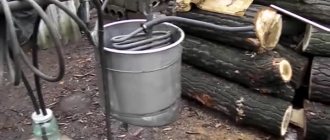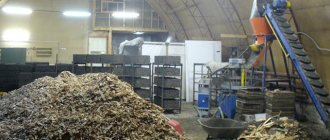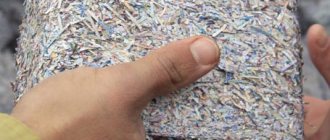A term such as " biodiesel"
", is understandable to most people purely intuitively. But often there is some confusion. It’s okay, but it’s still better to do without it and figure out what biodiesel is.
A bit of theory
During operation, gasoline or diesel fuel is burned in its cylinders. Both are products of oil refining, the reserves of which are limited; in addition, when these types of fuel are burned, substances are formed that are harmful to people and the environment. One option to avoid this is to use biodiesel as fuel for engines. It is necessary to explain what it is. The fact is that the production of biodiesel is based on the use of animal fats and vegetable oils as feedstock. A simple analogy can be drawn: gasoline and diesel fuel are obtained from oil; fuel for running an internal combustion engine can be obtained from oil or fat.
A small clarification - different substances can be used as fuel to operate engines, for example the same alcohol obtained from sawdust, but in this case we are considering fuel specifically for diesel engines, and the raw material for biodiesel, as this type of fuel is called, is oil or leftover fat.
How to use biofuel?
The use of fat and oil as fuel can be done in the following ways: ✔ Directly, by pouring oil into the tank. The disadvantage of this approach will be its incomplete combustion, mixing with the lubricant and deterioration of its lubricating properties, as well as the appearance of deposits on injectors, rings, pistons due to the increased viscosity of vegetable fuel. ✔ Mixing it with kerosene or diesel fuel. ✔ By converting vegetable oil, the source of which can be rapeseed, corn, sunflower, etc., and ultimately obtaining biodiesel. The oil conversion technology is considered the most complex of those mentioned, but nevertheless, it is so simple that it is easily implemented, thanks to which you can obtain biodiesel at home.
Installation quality criteria
It is extremely difficult to assemble a high-quality, efficient and productive installation at home. For example, even if we take into account such a criterion as the metal from which the electrode plates or tubes are made, there is already a risk of encountering problems.
The durability of electrodes depends on the type of metal and its properties. You can, of course, use the same stainless steel, but the lifespan of such elements will be short.
A kind of parody of electrode plates for a hydrogen generator. The plates are taken from a conventional variable capacitor, which are made of aluminum. Such electrodes will be enough for exactly half an hour of operation even as part of a small experimental system
Installation dimensions also play a significant role. Calculations with high accuracy are required in relation to the required power, water quality and other parameters.
So, if the gap between the working electrodes is outside the calculated value, the hydrogen generator may not function at all. In the worst case, the power for which the calculation was made will turn out to be several times less.
Even the cross-section of the wire connecting the electrodes to the power source is important in the design of a hydrogen generator. True, this concerns the safe operation of the device. However, this design detail should also be taken into account in home installations.
Returning to the safe operation of the system, one should also not forget about the introduction of a so-called water seal into the design, which prevents the reverse movement of gas.
Despite a fairly impressive number of developments of homemade hydrogen generators, there is no really effective option yet. All models are inferior to factory equipment
What is biodiesel?
In fact, biodiesel is a mixture of esters, mainly methyl ester, as a result of a chemical reaction.
Its advantages include: ✔ vegetable origin, thanks to the ability to grow plants we obtain a renewable source of fuel; ✔ biological safety, biodiesel is environmentally friendly, its release into the environment does not cause any harm to it; ✔ lower emissions of carbon dioxide and other toxic substances; ✔ low sulfur content in the exhaust gases of engines using biodiesel; ✔ good lubrication characteristics. Essentially, vegetable oil is a mixture of esters with glycerin, which gives it viscosity. The biodiesel production process involves removing glycerin and replacing it with alcohol. It is worth noting that the disadvantage of such fuel is the need to heat it at low temperatures or use a mixture of biodiesel and regular diesel fuel.
Let's return to the internal combustion engine
During operation, gasoline or diesel fuel is burned in its cylinders. Both are products of oil refining, the reserves of which are limited; in addition, when these types of fuel are burned, substances are formed that are harmful to people and the environment. One option to avoid this is to use biodiesel as fuel for engines.
It is necessary to explain what it is. The fact is that the production of biodiesel is based on the use of animal fats and vegetable oils as feedstock. A simple analogy can be drawn: gasoline and diesel fuel are obtained from oil; fuel for running an internal combustion engine can be obtained from oil or fat.
A small clarification - different substances can be used as fuel to operate engines, for example the same alcohol obtained from sawdust, but in this case we are considering fuel specifically for diesel engines, and the raw material for biodiesel, as this type of fuel is called, is oil or leftover fat.
Production technology
The technology for producing biodiesel is quite simple. It is usually made from various types of vegetable oil. For this, rapeseed, soybeans, corn, etc. can be used; the general list of substances suitable for obtaining feedstock is quite significant. Oil left over from cooking is also suitable for producing biodiesel. A diagram of such a process can be seen in the figure below.
Since we are considering fuel of plant origin, then the technology for its production should cover the process of growing the feedstock. Rapeseed is considered the most suitable for this, as it requires less production costs. Although now there are great prospects for biodiesel from algae. In this case, the land for growing crops for fuel is not used, and the cost of biodiesel will be lower than in other cases. So, the seeds (rapeseed, soybeans, sunflower, etc.) after quality control are supplied to the churn. The meal remaining after oil production can be used by the feed industry, and the resulting oil, as the technology provides, goes for further processing. It is called esterification, and after it is carried out, the biodiesel composition should contain more than ninety-six percent methyl esters. The technology itself is simple, which makes it possible to organize the production of biodiesel at home. Methanol (9:1) is added to the oil, and a small amount of alkali is used as a catalyst. Methanol can be obtained from sawdust, and isopropyl alcohol or ethanol can also be used instead. The esterification procedure takes place at elevated temperatures and takes up to several hours. After the reaction is completed, liquid stratification is observed in the container - biodiesel on top, glycerin below. Glycerin is removed (drained from below) and can be used as a raw material in some other processes. The resulting biodiesel must be purified; sometimes evaporation, settling and subsequent filtration are sufficient. The industrial production process is shown in more detail in the video.
Biodiesel at home
As can be seen from the description presented, the production technology is quite simple and allows you to produce biodiesel with your own hands, to the point that you can obtain fuel at home, and sometimes not only for your own needs. The reasons for taking on such work may be different for everyone, but without touching on them, it is worth noting that biodiesel consumption is only growing around the world. When you make biodiesel with your own hands at home, the main problem will not be the issue of its production, but ensuring the quality of the finished product. Suppliers of raw materials can be public catering enterprises that have a sufficient amount of used oil, and it can be purchased at an affordable price. It is worthwhile to grow rapeseed when consuming biodiesel in large quantities, for example, for external sales or for having a large fleet of equipment. When organizing production at home, the most pressing problems will be: ✔ Poor output, i.e. no more than ninety-three percent of the finished product is obtained from the original raw materials. This may be due to the characteristics of the installation used at home or the transesterification modes. ✔ Poor quality filtration. This process is quite complex, and in order to obtain high-quality biodiesel at home, special attention must be paid to it. For this purpose, special technologies or adsorbents are used. You can see the installation for the production of such fuel directly in the video. There are other options for installations for the production of biodiesel at home, manufactured industrially.
Calculation of installation profitability
Cow dung is usually used as a raw material for biogas production. One adult cow can produce enough to provide 1.5 cubic meters. fuel; pig – 0.2 cubic meters; chicken or rabbit (depending on body weight) – 0.01-0.02 cubic meters. To understand whether this is a lot or a little, you can compare it with more familiar types of resources.
Image gallery Photos from Sometimes systems are installed in utility rooms. This is convenient from the point of view of inspections and maintenance, but unsafe, because... biomethane may explode
Therefore, special attention should be paid to safety issues
Transportation of raw materials is a separate issue that should be considered during the design of a biogas plant. For transportation around the site, it is better to use special equipment or trailers. If you need delivery over long distances, you should calculate the fuel costs and determine whether they will pay off
When purchasing containers for a biogas plant, and even more so when making them yourself, you will have to pay attention to their quality. Also, during the operation of the system, regular condition checks and repairs are required. A biogas plant can be a real salvation for a farm
It allows you to save on fuel for heating and/or lighting barns. This is also an excellent option for harmless waste disposal. However, in the first years one can hardly count on full return
A biogas plant can be a real salvation for a farm. It allows you to save on fuel for heating and/or lighting barns. This is also an excellent option for harmless waste disposal. However, in the first years one can hardly count on full return
Construction of a bioreactor made from an insulated plastic container
Convenient transport for transporting substrate
Compact plant for industrial production
Biogas plant on a dairy farm
1 cubic meter biogas provides the same amount of thermal energy as:
- firewood – 3.5 kg;
- coal – 1-2 kg;
- electricity – 9-10 kW/h.
If you know the approximate weight of agricultural waste that will be available over the coming years and the amount of energy required, you can calculate the profitability of a biogas plant.
One of the main disadvantages of biogas production is the smell. The ability to use small compost heaps is a big plus, but you will have to endure the inconvenience and carefully control the process so as not to provoke the spread of pathogens (+)
To put it into the bioreactor, a substrate is prepared, which includes several components in the following proportions:
- manure (best cow or pork) – 1.5 t;
- organic waste (this can be rotten leaves or other components of plant origin) – 3.5 t;
- water heated to 35 degrees (the amount of warm water is calculated so that its mass is 65-75% of the total amount of organic matter).
The calculation of the substrate was made for one laying for six months, based on moderate gas consumption. After about 10-15 days, the fermentation process will give the first results: gas will appear in small quantities and begin to fill the storage. After 30 days, you can expect full fuel production.
Equipment for the production of biogas is not yet particularly widespread in our country. This is largely due to poor awareness of people about the advantages and features of biogas systems. In China and India, many small farms are equipped with makeshift plants to produce additional clean fuel
If the installation is working correctly, the volume of biogas will gradually increase until the substrate rots. The performance of the structure directly depends on the rate of biomass fermentation, which in turn is related to the temperature and humidity of the substrate.
Prospects
As already noted, the production of such fuel is only growing. And although the raw material for this is vegetable oil, it is obtained in different places from different crops. In Europe - rapeseed, in Indonesia - palm oil, in America - soybeans, etc. However, the most promising is the production of biodiesel from algae. For their cultivation, both individual ponds and special bioreactors, as well as areas of the sea coast can be used. In addition, this not only increases fuel production, but also frees up land for growing food. Although biodiesel is made from vegetable oil and not sawdust, it is an excellent substitute for conventional diesel fuel. Especially in conditions of limited oil reserves. And besides, one cannot exclude such an advantage as the possibility of production at home. Despite the fact that in industrial production it is more expensive than diesel fuel, it is nevertheless an excellent alternative fuel for diesel engines.
Making your own leaf pellets
Many people widely use pellets for heating. They are granules that are obtained by processing natural fuels and all kinds of waste. You can make pellets from leaves and sawdust with your own hands.
Production of pellets at home:
Coarse grinding. Using a large crusher, the raw materials are crushed to convenient sizes for drying. Drying of raw materials. The moisture content of the material should be no more than 15%. At high humidity, the material is difficult to press. Additional grinding. The particle size should be 1.5-2 mm. Wood waste is processed in a hammer mill. Mixing
It is important to measure the humidity level here. The ideal figure is 12%, but not less than 8%. Otherwise, the material will have to be treated with steam.
For pine waste, add water while mixing. Pressing. The raw material is passed through a press. Such equipment is freely available for sale. Often a granulator is used to produce granules. Drying and cooling. The pressed substance must be packaged after cooling
Otherwise, the material will have to be treated with steam. For pine waste, add water while mixing. Pressing. The raw material is passed through a press. Such equipment is freely available for sale. Often a granulator is used to produce granules. Drying and cooling. The pressed substance must be packaged after cooling.
A variety of materials can be used to make pellets: chicken droppings, sawdust, straw, peat, sunflower husks. They often resort to using manure. These materials are widely used both in pure form and in diluted form. But the best fuel briquettes are obtained from waste wood processing of coniferous trees.
Chemical process for producing biodiesel
To produce biodiesel, any type of vegetable oil is used - sunflower, rapeseed, linseed, etc. At the same time, biodiesel obtained from different oils has some differences. For example, palm biodiesel has the highest calorie content, but also the highest filterability and pour point. Rapeseed biodiesel is somewhat inferior to palm biodiesel in terms of caloric content, but it tolerates cold better, therefore it is most suitable for European countries and Russia. Chemically, biodiesel is a methyl ester, which is a product of the esterification reaction of vegetable oil at a temperature of about 50 C in the presence of a catalyst. The process itself is, in principle, quite simple. It is necessary to reduce the viscosity of vegetable oil, which can be achieved in various ways. Any vegetable oil is a mixture of triglycerides, i.e. esters combined with a glycerol molecule with trihydric alcohol ( C3H8O3
).
It is glycerin that gives viscosity and density to vegetable oil. The goal when preparing biodiesel is to remove glycerin, replacing it with alcohol. This process is called transesterification
.
The overall reaction looks like this: CH2OC=OR1 |
CHOC=OR2 + 3 CH3OH > (CH2OH)2CH-OH + CH3COO-R1 + CH3COO-R2 + CH3OC=O-R3 | CH2COOR3 | Triglycerides + methanol > glycerol + ethers, MA "Navigator" Technologies and equipment for the production of biodiesel fuel 10 Where R1, R2, R3: alkyl groups. As a result of the use of methanol, methyl ether is formed, and as a result of the use of ethanol, ethyl ether is formed. From one ton of vegetable oil and 111 kg of alcohol (in the presence of 12 kg of catalyst) approximately 970 kg (1100 l) of biodiesel and 153 kg of primary glycerin are obtained. The alkali used is potassium hydroxide KOH or sodium hydroxide NaOH. For beginners, it is recommended to use NaOH.
Content
- 1 Process steps 1.1 Pre-treatment of raw materials
- 1.2 Reactions
- 1.3 Product cleaning
- 2.1 Transesterification
- 3.1 Supercritical process
Benefits of Biodiesel
The main advantage of biodiesel
is that it is produced from resources that are quickly restored (oil reserves, for example, are practically irreplaceable).
For example, this issue is very relevant for collective farms that process oil; everyone has a pressing question: where to get diesel fuel at the beginning of the season. The answer is simple, make biodiesel from your own raw materials and be completely autonomous in fuel consumption. Plant origin
.
We emphasize that biodiesel does not have a benzene odor and is made from oils, the raw materials for which are plants that improve the structural and chemical composition of soils in crop rotation systems. The raw materials for the production of biodiesel can be various vegetable oils: sunflower, rapeseed, soybean, peanut, palm, cottonseed, flaxseed, coconut, corn, mustard, castor, hemp, sesame, waste oils (used, for example, in cooking), as well as animal fats. Ecology
.
The strength of biodiesel is also that during combustion it emits much less harmful gases into the atmosphere (biodiesel, compared to its mineral counterpart, contains almost no sulfur (Biological harmlessness. Compared to mineral oil, 1 liter of which can pollute 1 million liters of drinking water and lead to the death of aquatic flora and fauna, biodiesel, as experiments show, when released into water does not harm either plants or animals. In addition, it undergoes almost complete biological decay: in soil or water, microorganisms process 99% of biodiesel in a month , which allows us to talk about minimizing pollution of rivers and lakes when switching water transport to alternative fuels. Less CO2 emissions
. When biodiesel is burned, exactly the same amount of carbon dioxide is released that was consumed from the atmosphere by the plant, which is the feedstock for oil production, for the entire period However, it should be noted that calling biodiesel an environmentally friendly fuel would be incorrect.
It produces less carbon dioxide emissions than conventional diesel fuel, but it is still not zero emissions. Good lubricating properties
.
It is known that mineral diesel fuel, when sulfur compounds are removed from it, loses its lubricating properties. Biodiesel, despite its significantly lower sulfur content, is characterized by good lubricating properties. This is due to its chemical composition and oxygen content in it. For example, a truck from Germany entered the Guinness Book of Records after traveling more than 1.25 million kilometers on biodiesel fuel with its original engine. Increased engine life
.
When an engine runs on biodiesel, its moving parts are simultaneously lubricated, which results, as tests show, in increasing the service life of the engine itself and the fuel pump by an average of 60%. It is important to note that there is no need to upgrade the engine. High flash point
. Another technical indicator that is interesting for organizations storing and transporting fuels and lubricants: flash point. For biodiesel, its value exceeds 150°C, which allows us to call biofuel a relatively safe substance. However, this does not mean that it can be treated with negligence.
History of development
Transesterification of vegetable fats was carried out in 1853 by scientists E. Duffy and J. Patrick, long before the launch of the first diesel engine.
On June 10, 1893, in Augsburg, Germany, Rudolf Diesel tested his first single-cylinder engine, which was 3 m long and weighed 4.5 tons. The engine exploded and nearly killed the inventor. In memory of the event, June 10 was proclaimed “International Biodiesel Day.” In 1900, at the World Exhibition in Paris, Diesel, demonstrating his engine, received the main award. Diesel believed that the future for its engines was using biofuels. In 1912 he said "the use of vegetable fats for the production of fuel may seem unimportant now, but in the course of time such fats may become as important as the products of petroleum and coal tar are in our time."
During the 1970s, diesel engine manufacturers shifted their engines to use diesel fuel made from petroleum, which has a lower viscosity than vegetable fats. The oil industry was able to make inroads into the fuel market because producing fuel from oil was significantly cheaper than from biological raw materials. As a consequence, many years of decline in biofuel production. Only recently, amid environmental concerns and decreasing cost differentials, have biofuels such as biodiesel become a viable alternative.
Research into the use of transesterified sunflower oil and improving its quality to the standards of conventional diesel fuel began in South Africa in 1979. Until 1983, the research results were published. The technological process made it possible to produce biodiesel, the quality of which corresponded to the standards of conventional diesel fuel. An Australian company, Gaskoks, received the technology from South African researchers, and built the first pilot plant for biodiesel production in November 1987, and the first mass production plant in April 1989 (with the capacity to process 30,000 tons of rapeseed per year).
During the 's, factories were built in many European countries, in particular the Czech Republic, Germany and Sweden. France began its own production of biodiesel from rapeseed oil; 5% biodiesel is added to regular diesel fuel, and 30% to diesel fuel used by public transport. Experiments are ongoing using 50% biodiesel. Meanwhile, countries around the world are beginning to develop their own production: in 1998, the Austrian Biodiesel Institute identified 21 countries with commercial biodiesel production projects.
In September, Minnesota became the first US state to have a legislative requirement that allows the sale of only diesel fuel containing at least 2% biodiesel.











